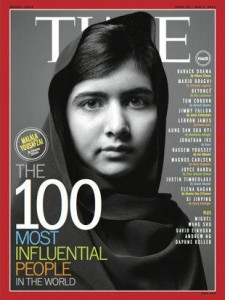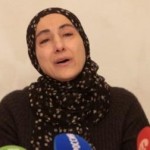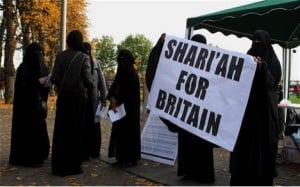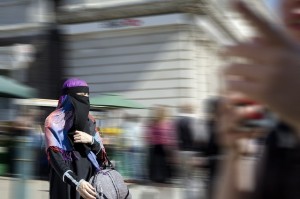“She ought to be in prison for wearing the hijab” said conservative political pundit Ann Coulter on Fox news two weeks ago. Then she added, seemingly baselessly, “Did she get a clitorectomy too?” Given that America’s impression of Muslim women as a whole is often still that of oppressed and childlike foreigners, remarks like Coulter’s are no shock. They do, however, raise the question of how a culture that views a group as so devoid of agency handles the power and activism that they do demonstrate. Increasingly, American media and culture have been forced to confront the ultimate threat to their conventional typecast: empowered Muslim women. Their reaction in these moments speaks volumes.
Take, for example, the case of Malala Yousafzai. Malala was recently named the world’s most influential person by the TIME 100, the latest shower of attention in a media frenzy that has spanned several months. Malala, who bravely took a stand against Pakistani Taliban, attracted the attention of the worldwide press when she survived a near-fatal shooting last October. While Malala is doubtless an icon for activists the world round, the mainstream Western media’s coverage of her managed to tailor even her brave tale to their own needs. Malala received constant coverage for the much of late 2012. Overall, the insights apparently gained from her experience were not primarily that the U.S. presence in the area has increased Pakistani radical groups or that drone attacks create blowback, but that controversial U.S. military actions are a necessary sacrifice to save girls like Malala. The prevailing media rhetoric became one of idolizing Malala while resolutely refusing any possible blame.

Another Muslim woman was listed in the TIME 100 this year too: Roya Mehboob, who has, in the face of extreme hardship, become one of Afghanistan’s few female CEOs. The point is not that this brave woman is undeserving of her honor, but that she, alongside other Muslim women activists, seems cherry-picked by the American media to show the face of Muslim activism they are comfortable with; a face that aligns with U.S. policies. In a world where 1/8 of the population is Muslim women, of TIME’s 100 picks, only two – both of whom fit the American narrative of being exceptions and easily positioned as pro-America – are notable.
Similarly, much of the American news media also singles out select Muslim women writers and activists to focus on. Writers such as Mona Eltahawy , Ayaan Hirsi Ali (who is a former Muslim), and Asra Nomani, who write on hijabs being oppressive, on Muslim men “hating” Muslim women, and on Islam’s flaws being inherent, are frequently put in the spotlight. For example, all three are regular guests on notable news programs concerning Muslim women, where they are positioned as experts and authorities on the matter. The reason activists who purport “Islam is misogynist” views get attention is obvious; they are saying what America wants to hear. Mainstream American media holds on to these stories because it desperately needs them; otherwise, they might have to rethink their entire worldview.
Undoubtedly, some of these activists do important work and deserve recognition for it. However, their stories are often twisted and exploited to best support the view of Muslim women the U.S. media holds, They are seen as members of a small, empowered elite and serve to continue portraying the majority of Muslim women as oppressed. At the same time, other stories challenging that viewpoint, such as ones that show that hijabs are not anti-woman, or ones that explore how many Muslim women are not oppressed, are largely left out, despite their potential power to change attitudes about Muslim women and Islam. Instead of forming a new narrative or accepting that old ideas may have been flawed, many major media outlets have chosen to interpret incidences exposing their stereotype’s flaws through another stereotype.
As opposed to the old doctrine that read simply, Muslim women are oppressed, the new one reads: Muslim women are oppressed, but working for American causes can bring liberation. Muslim women can be activists, but only if they’re opposing the right people. Muslim women can be victims, but only if our enemies are the perpetrators. Muslim women can even be heroes, but only if they’re fighting for our cause.












